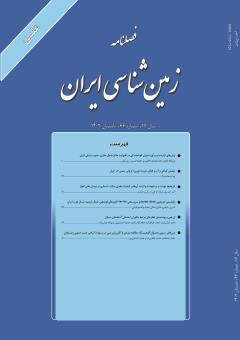پوشش گیاهی و آب و هوای دیرینه نورین (تریاس پسین) در ایران
محورهای موضوعی :
1 - دانشگاه فردوسی مشهد
کلید واژه: آب و هوای دیرینه, ایران, پوشش گیاهی دیرینه, نورین. ,
چکیده مقاله :
توالیهای سنگی حاوی ماکروفسیلهای گیاهی به سن نورین در ناحیه البرز مربوط به دو واحد چینهشناسی للـهبند و شهمیرزاد، در ناحیه کپهداغ مربوط به سازند میانکوهی و در ایران مرکزی مربوط به پارهسازند قدیر در ناحیه طبس و بخش دهرود در ناحیه کرمان میباشند. بهطورکلی تنوع و پوشش گیاهی در طی زمان نورین کمتر از رتین بهویژه ژوراسیک (گروه شمشک) است و بیشترین تنوع پوشش گیاهی زمان نورین در حوضه البرز مربوط به شاخه پتریدوسپرموفیتها (سرخسهای دانهدار) و در حوضه ایران مرکزی مربوط به شاخه پتریدوفیتها (سرخسها) است و نشاندهنده رطوبت بالاتر زمان مذکور در حوضه ایران مرکزی و خشکتر بودن آب و هوای حاکم در حوضه البرز میباشد. بیشترین تنوع پوشش گیاهی در توالیهای سنگی نورین در سراسر ایران مربوط به شاخه پتریدوسپرموفیتها و کمترین تنوع مربوط به ژینکوفیتها است بهطوریکه بهترتیب 32 درصد (یک سوم پوشش گیاهی) و 5/6 درصد از کل پوشش گیاهی را شامل میشوند. نواحی پوشیده از گیاهان در سراسر البرز در طی زمان نورین مرتبط با یکدیگر است و جدایش وسیعی بین آنها وجود نداشته است. مجموعه ماکروفسیلهای گیاهی در هر دو حوضه البرز و ایران مرکزی موید آب و هوایی به نسبت مرطوب نیمه گرمسیری تا گرمسیری برای زمان نورین ولی با رطوبت کمتری در قیاس با زمان رتین میباشند. همچنین پوشش گیاهی زمان نورین در البرز کم تراکمتر و پراکندهتر از ایران مرکزی در طی زمان نورین است.
Rock beds containing plant macrofossils of Norian in Alborz region belong to two stratigraphic units of Lalehband and Shahmirzad. The same beds in Kopeh-Dagh area belong to Mian-Kuhi Formation and in Central Iran belong to Qadir submember in Tabas region and Dehroud member in Kerman region. In general, plant diversity and vegetative cover during the Norian stage is less than Rhaetian especially Jurassic (Shemshak group) and the highest plant diversity of Norian in the Alborz basin is related to the phyllum of Pteridospermophytes (seed ferns) and in the Central Iran basin is related to the phyllum of Pteridophyta (ferns) indicating the higher humidity of the mentioned time in Central Iran basin and the drier climate in Alborz basin. The highest diversity of vegetation in Norian sediments throughout Iran belongs to the seed ferns (Pteridospermophyta) and the lowest diversity belongs to Ginkgophytes so that they comprise 32% (one third of the vegetation) and 6.5% of the total vegetation, respectively. Plant-covered areas throughout Alborz were interconnected during the Norian period and there was no extensive separation between them. The plant macrofossils assemblage in both Alborz and Central Iran basins confirms the relatively humid subtropical to tropical climate for the Norian but less humidity compared to the Rhaetian. Also, the vegetation of Norian in Alborz was less dense and scattered than Central Iran during Norian.
